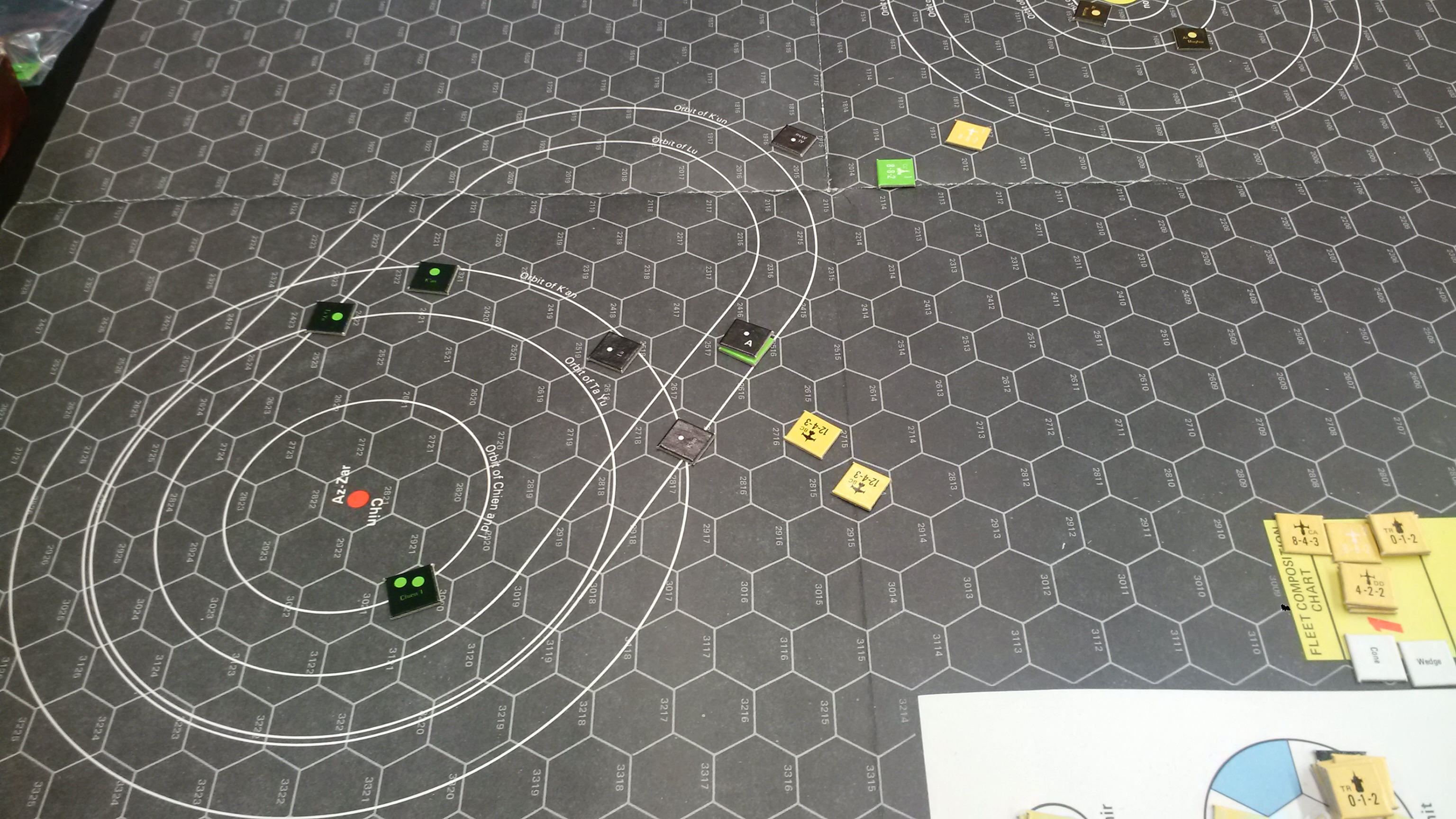 There is nothing as fun and nostalgic as bringing out an older game and gazing upon it with fresh eyes. Recently, I had such opportunity, and not only to bring it out for play, but to play it with the same opponent I faced off against thirtysome years ago. It’s an interesting experience opening up the rules after so long, looking back on what we could remember and comparing those shadows of memory to the text before us.
There is nothing as fun and nostalgic as bringing out an older game and gazing upon it with fresh eyes. Recently, I had such opportunity, and not only to bring it out for play, but to play it with the same opponent I faced off against thirtysome years ago. It’s an interesting experience opening up the rules after so long, looking back on what we could remember and comparing those shadows of memory to the text before us.
The game summoned from its long slumber is the GDW classic Double Star, designed by the master of Sci-Fi gaming Marc W. Miller. When a gamer in the late seventies and early eighties wanted to get into Sci-Fi, a reliable source was GDW and one of Marc’s designs. Imperium, Triplanetary, and Belter are among some of the solid and fun games produced by GDW in those early days that reflect Marc’s approach: an interesting story to tell, a fantastic situation to be placed in, and interesting mechanics to resolve it all.
While I still have a copy of Imperium, we had long ago lost my friends original Double Star. Recently, in a determined and emphatic attempt to restore our originals, we’ve gone on a bit of a hunt to recover some of our lost treasures. Double Star was one of our first recoveries and thus one of our first old-schools to be played.
The premise of the game is intriguing. Two earth cultures, the Chinese and Islamic, have ventured to the stars and colonized two adjacent star systems: Chin and An-Nur respectively. These nova-humanitas, are now in conflict and have launched their armadas into space. Major worlds contain population (in millions), factories, bases, and defense systems. Fleets are composed of transports, destroyers, cruisers and battleships. An interesting concept revolves around the use of command cruisers, which permit the creation of fleets. These fleets have the inherent ability to train new formations which are then selected during inter-ship combat to enhance attack and defense power.
Destroying the opposing civilizations ability to fight includes devastating their production capability and annihilating the non-combatant population. If that sounds like the classical warfare of a bygone era then the classification is right-on; Miller strove for a feeling of barbarism and genocide with this title. One of the novel aspects of the game is the ability to break moons and smaller planetoids out of their orbits and send them hurtling towards your opponents planets. Needless to say these can cause devastating damage if they achieve a strike.
We played the short “raid” scenario just to get our feel for the game back. Next play will be the full game and the interstellar struggle for ruination or survival will be rendered to conclusion. Look for a piece on that experience in a future installment.

Two Islamic Cruisers have broken off the main fleet action for a raid while the planetoid Al-Akhir hurtles towards Chien.

 The art of wargaming has evolved over the past fifty years and that is a good thing. I don’t mean to take away from the wonderful designs of the past, I myself am an avid collector and player of classic wargames. Designers have introduced new mechanics and modern elements to wargames; and I speak not just of
The art of wargaming has evolved over the past fifty years and that is a good thing. I don’t mean to take away from the wonderful designs of the past, I myself am an avid collector and player of classic wargames. Designers have introduced new mechanics and modern elements to wargames; and I speak not just of 